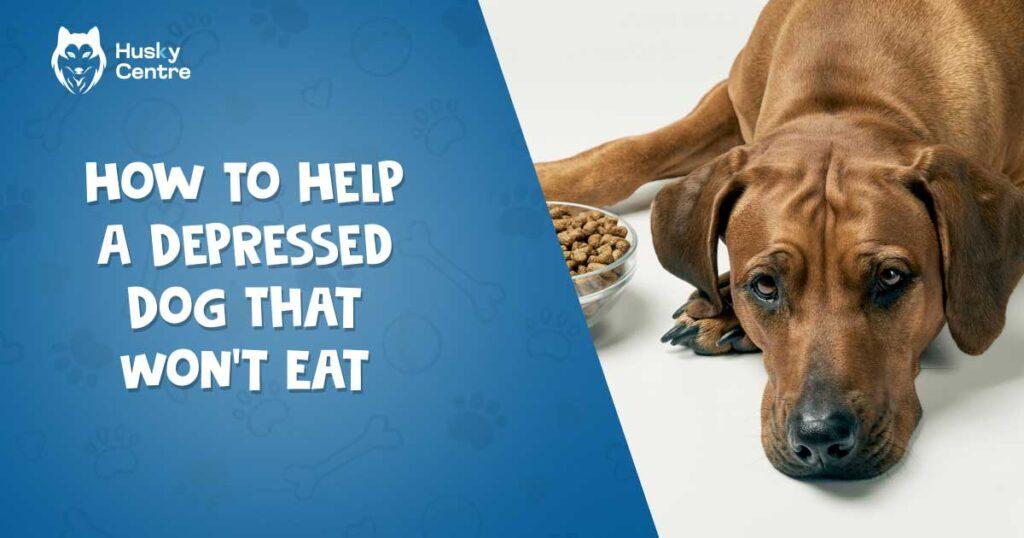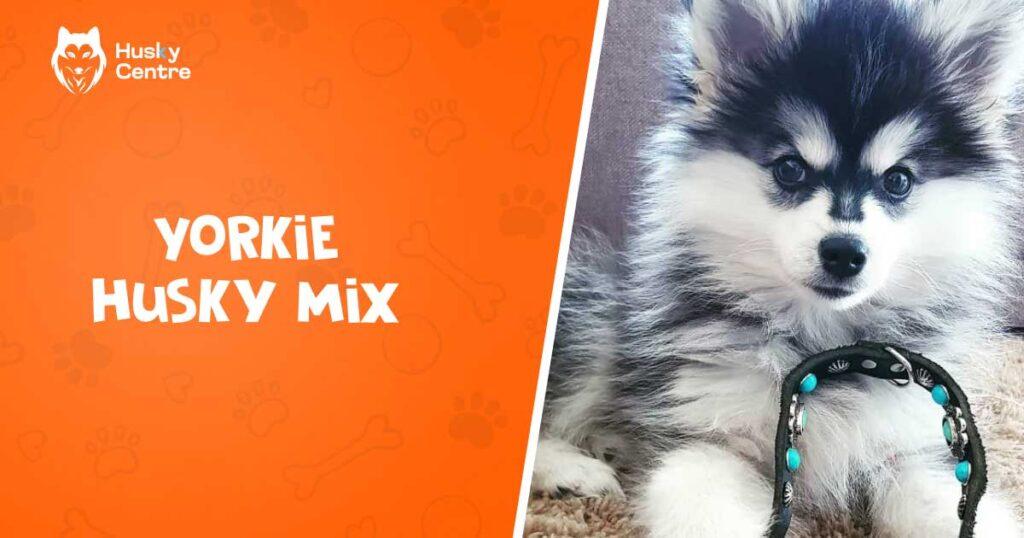A depressed dog that won’t eat is a serious concern. It’s vital to act quickly to help your furry friend.
Dogs, like humans, can suffer from depression. This can lead to a loss of appetite. It’s heartbreaking to see your dog sad and uninterested in food. There are many reasons a dog might feel this way. Maybe a change in routine or the loss of a companion.
Identifying the cause is the first step. Then, you can take steps to improve their mood and appetite. With patience and love, you can help your dog feel better. This blog will guide you through practical steps to support your dog. Let’s explore how to restore their joy and appetite.
Recognizing Signs Of Depression In Dogs
Just like humans, dogs can experience depression. Recognizing signs of dog depression is crucial, especially if your dog stops eating. Identifying dog depression early can help you provide the necessary care and support to your furry friend. Let’s explore some common symptoms of a depressed dog.
Loss Of Interest In Activities And Toys
One of the main signs of dog depression is a loss of interest in activities and toys. If your dog previously enjoyed playing fetch or tug-of-war but now shows no interest, this could be a symptom of a depressed dog. A happy dog is usually excited about playtime and enjoys interacting with their favorite toys.
- Ignoring toys that were once favorites
- Reluctance to engage in physical activities
- Disinterest in going for walks
Dogs thrive on routine and play. When this routine is disrupted, it can indicate that something is wrong. Recognizing canine depression involves observing changes in your dog’s behavior. If your dog avoids activities they used to love, it may be time to consult a veterinarian.
Reduced Energy And Excessive Sleeping
Another symptom of a depressed dog is reduced energy and excessive sleeping. While dogs do sleep a lot, an unusual increase in sleep or a lack of energy can be a sign of dog depression. Pay attention to your dog’s daily patterns.
- Sleeping more than usual
- Less enthusiasm for daily walks
- Preferring to stay in bed or a quiet corner
Identifying dog depression means noting these changes. If your dog seems lethargic and uninterested in their surroundings, it’s important to take action. Increased sleep and low energy can affect their overall health, so it’s crucial to address these issues promptly.
Refusing Food Or Water
Refusing food or water is a significant red flag. This behavior is often associated with recognizing canine depression. Dogs that are depressed may lose their appetite and avoid eating or drinking.
- Skipping meals regularly
- Not drinking enough water
- Weight loss due to lack of appetite
Dogs need proper nutrition to stay healthy. If your dog is not eating or drinking, it can lead to more serious health problems. It’s essential to monitor their intake and seek veterinary advice if this behavior persists. Recognizing these signs early can help prevent further complications.
Ways To Encourage Eating In A Depressed Dog
When your dog is feeling down and won’t eat, it can be a worrying time. A lack of appetite is a common sign of dog depression. Finding ways to help your furry friend eat again is crucial for their recovery. Here are some effective ways to encourage eating in a depressed dog.
Offer Small Portions Of Tasty, Warm Food
One of the best dog not eating solutions is to offer small portions of tasty, warm food. Warm food often has a stronger aroma, which can stimulate your dog’s appetite. Here are some tips for feeding a depressed dog with warm food:
- Warm up their regular food: Heat their usual meals slightly to enhance the smell and make it more enticing.
- Offer homemade chicken broth: Pour warm, low-sodium chicken broth over their food to add flavor and moisture.
- Use microwave: Lightly heat wet dog food in the microwave for a few seconds.
Here’s a simple table with ideas for tasty, warm food:
| Food | Benefits |
|---|---|
| Warm chicken broth | Enhances aroma and flavor |
| Warm wet dog food | Soft texture, easy to eat |
| Warm rice and chicken | Gentle on the stomach |
Use A Variety Of Foods To See What Sparks Interest
Dogs can be picky, especially when they’re feeling down. Offering a variety of foods is one of the ways to get a depressed dog to eat. Experiment with different flavors and textures to find what they like. Here are some food ideas for dogs with depression:
- Lean meats: Try cooked chicken, turkey, or lean beef. These are often favorites.
- Vegetables: Offer small amounts of cooked carrots, peas, or sweet potatoes.
- Fruits: Some dogs enjoy fruits like apples or blueberries.
Keep a log of what foods your dog enjoys. This can help you identify patterns and preferences. Remember, variety is key. Mix and match different foods to keep meals interesting and appealing.
Try Hand-feeding For Extra Comfort And Attention
Hand-feeding can provide comfort and encourage your dog to eat. It shows your dog that you care and can make them feel more secure. Here are some tips for hand-feeding a depressed dog:
- Be patient: Sit with your dog calmly and offer small pieces of food from your hand.
- Use positive reinforcement: Praise and pet your dog when they take a bite.
- Start with favorites: Use foods you know they enjoy to begin the process.
For many dogs, the act of being fed by their owner can be very soothing. This extra attention can help lift their spirits and encourage them to eat. Remember, consistency is crucial. Make this a regular part of your routine to help your dog feel loved and supported.
Providing Comfort And Mental Stimulation
Is your dog feeling down and refusing to eat? This can be a sign of depression. Comforting depressed dogs and providing mental stimulation can help them recover. By offering love, new experiences, and a calm environment, you can support your furry friend through this tough time.
Give Extra Affection And Spend Quality Time Together
Depressed dogs need more affection and quality time. Extra love can make a big difference. Here are some ways to show your dog you care:
- Petting and cuddling: Physical touch can be soothing.
- Talking softly: Your voice can be a comfort.
- Sit together: Just being near you can help.
Spending quality time together can also help stimulate your dog’s interest. Try these activities:
- Watch TV or listen to music: Some dogs enjoy the sound and sight of a screen.
- Read a book: Read aloud. Your dog will enjoy your company.
- Take naps together: Resting with you can be very comforting.
Showing extra affection and spending time together can provide much-needed mental support for a depressed dog.
Introduce New Toys, Walks, Or Gentle Playtime
New experiences can help stimulate your dog’s interest. Try introducing new toys or activities. This can encourage them to eat and feel happier.
Here are some ideas to consider:
- New toys: Different textures and sounds can engage your dog.
- Walks: Explore new areas. This can be exciting for them.
- Gentle playtime: Easy games like tug-of-war or fetch can be fun.
To help you plan, here’s a simple table:
| Activity | Benefit |
|---|---|
| New toys | Engages mind and senses |
| Walks | Provides fresh air and new sights |
| Gentle playtime | Encourages physical activity |
Introducing new toys, walks, and playtime can be effective techniques for comforting and stimulating a depressed dog.
Create A Calm, Supportive Environment For Recovery
Creating a calm environment is key for your dog’s recovery. This can help reduce stress and anxiety, making them feel safer.
Consider these calming techniques for dogs:
- Quiet space: Provide a peaceful area where your dog can relax.
- Soft bedding: Make sure their bed is comfortable.
- Aromatherapy: Use dog-safe essential oils like lavender.
Here’s a checklist to ensure a supportive environment:
- Minimize loud noises
- Keep a consistent routine
- Offer plenty of water
- Monitor their health closely
A calm, supportive environment can promote mental support for a depressed dog. With these adjustments, your dog can start to feel better and regain their appetite.
Frequently Asked Questions
How To Identify Depression In Dogs?
Look for signs like lethargy, loss of interest, and changes in behavior. A depressed dog might also have changes in appetite and sleep patterns.
Why Is My Depressed Dog Not Eating?
Depression can cause a lack of appetite in dogs. Stress, anxiety, and changes in their environment can also contribute to this behavior.
What Foods Can Help A Depressed Dog?
Offer high-quality, nutritious foods that are appealing to your dog. Sometimes, warming up their food or adding broth can make it more enticing.
Can Exercise Improve My Dog’s Depression?
Yes, regular exercise can improve a dog’s mood and overall well-being. It helps release endorphins, which can help alleviate symptoms of depression.
Conclusion
Helping your depressed dog eat again is crucial. Patience and love matter most. Offer their favorite treats. Create a calm feeding space. Visit the vet for advice. Monitor their progress closely. Small steps lead to big changes. Your support can make a difference.
A happy, healthy dog is worth the effort. Keep trying, and don’t give up. Your furry friend needs you.


Meet Jarred, the heart and soul behind HukyCentre. With a deep affection for furry friends, he pours his passion into every word he writes. His genuine love for dogs shines through in his engaging and informative content. As a dedicated dog enthusiast, Jarred’s goal is to share valuable insights and tips that resonate with fellow dog lovers. Join Jarred on the journey as he celebrates the joy and companionship that dogs bring into our lives.


